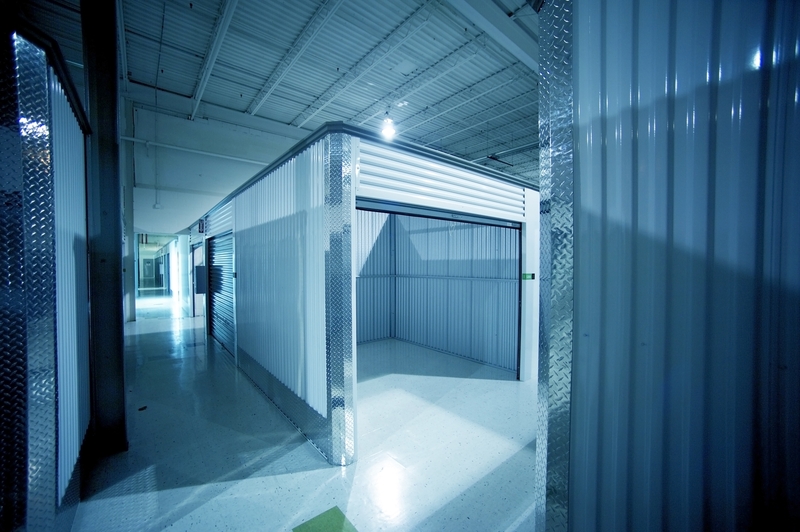The Safest Way to Move a Piano and Why DIY Is a Risky Choice
Moving a piano is a task that is often underestimated by many homeowners. While the idea of saving money with a do-it-yourself piano move may be tempting, the risks and potential costs are significantly higher than most anticipate. If you value your piano and your safety, understanding the safest way to move a piano is crucial. In this comprehensive guide, we explore the intricacies of piano moving, discuss the dangers of DIY attempts, and offer expert advice on how to ensure your instrument arrives at its destination unscathed.

Understanding the Complexity of Moving a Piano
Pianos are not ordinary pieces of furniture. Their size, weight, and delicate internal mechanisms set them apart from most other objects you might need to relocate. Here's why moving a piano is uniquely challenging:
- Weight and Size Variations: Pianos vary greatly in size and weight. Baby grand pianos can weigh upwards of 500 pounds, while concert grands may tip the scales at over 1,200 pounds.
- Delicate Construction: A single piano can contain 7,000-10,000 moving parts, many of which are extremely sensitive to impact and vibration.
- Awkward Shape: The shape of a piano is uniquely cumbersome, with parts that can be both heavy and fragile at the same time.
- Expensive Finish: High-gloss finishes or elaborate woodwork can be easily marred by improper handling.
- Tuning Sensitivity: Even slight shifts can throw a piano out of tune or cause permanent internal damage.
Simply put, moving a piano is not a one-size-fits-all operation--it's a job for trained professionals.
Types of Pianos and Their Moving Challenges
Before you decide how to move a piano, it's important to recognize the specific risks associated with each type of piano:
Upright Pianos
- Upright or vertical pianos are more compact than grands but still extremely heavy (weighing 300-900 pounds).
- Their height and weight distribution make them difficult to maneuver around corners or up stairs.
Grand and Baby Grand Pianos
- These pianos are even heavier (500-1,200+ pounds).
- Their curved shapes require careful handling to avoid putting pressure on fragile legs or sensitive internal mechanisms.
- The lid, pedals, and legs usually have to be removed before moving.
Digital Pianos and Console Pianos
- While lighter, digital pianos and consoles still require care to prevent damaging electronics or fragile cabinetry.
Common Risks of DIY Piano Moving
Many people have been lured by the idea of saving money and attempting to move their piano themselves. Unfortunately, this approach is fraught with risks, ranging from property damage to severe personal injury.
Why DIY Piano Moves Are Dangerous
- Risk of Injury: Attempting a piano move without the right equipment or technique can result in back strains, crushed fingers, or even more severe injuries.
- Property Damage: DIY movers often underestimate the risk of scratched floors, dented walls, or broken stair railings.
- Irreparable Piano Damage: Dropping a piano, improper lifting, or jostling can break internal parts, resulting in costly repairs or total loss of the instrument's sound quality.
- Lack of Adequate Manpower: Most successful moves require several strong and coordinated people; a lack of teamwork increases the likelihood of accidents.
- No Insurance Coverage: Most homeowner insurance policies don't cover damage to pianos during a DIY move.
Saving a few dollars in moving fees is simply not worth the risk to your piano, your property, or your well-being.
How Professionals Ensure Piano Moving Safety
The safest way to move a piano is to hire experienced, insured piano movers. Here's how the pros handle this delicate operation:
Site Assessment and Planning
- Professional movers evaluate doorways, stairs, and tight spaces to plan the best route in advance.
- If necessary, they may remove doors, railings, or other obstacles.
Specialized Equipment
- Piano dollies and skid boards: These allow the piano to roll smoothly and safely.
- Straps and harnesses: Secure the piano to prevent shifting in transit.
- Padding and blankets: Protect the piano's finish and internal components.
- Ramps: Aid in moving across stairs or curbs with reduced risk.
Team Coordination
- Movers work in coordinated teams with clear communication, ensuring everyone lifts and maneuvers together.
- One team member is always focused on monitoring the piano's surroundings to prevent accidental collisions.
Insurance and Guarantees
- Professional piano movers are fully insured, meaning your instrument is protected in the rare event that damage does occur.
Piano Reassembly and Tuning
- After moving, professionals reassemble all parts (legs, pedals, lids) and will often recommend a follow-up tuning appointment to restore the piano's sound quality.
The Costs of Moving a Piano Professionally vs. DIY
While professional piano moving services are not free, they are often less expensive than the costs incurred by a failed DIY move. Consider the following potential expenses:
DIY Piano Moving Costs
- Truck rental with loading ramps
- Purchase or rental of dollies, straps, moving blankets
- Possible medical bills from injuries
- Repairs for home damage (walls, floors, doors)
- Repair or replacement of the piano itself
When all potential costs are factored in, the perceived savings quickly disappear.
Professional Piano Moving Costs
- A flat or hourly rate (generally $200-$500 for local moves; more for long-distance)
- This price includes labor, equipment, insurance, and damage protection
Peace of mind is included in the price of a professional piano move.
Steps Involved in a Safe Piano Move
If you choose to hire professionals, here's a brief outline of what you can expect:
- Initial Assessment: Movers will assess the size and type of your piano, as well as your home layout.
- Preparation: The team will remove parts if necessary, wrap the piano, and secure loose items.
- Transport to the Truck: Using dollies and padded boards, the piano is rolled (not dragged) to the moving vehicle.
- Loading and Securing: The piano is carefully loaded and anchored in the truck to prevent movement in transit.
- Delivery and Setup: At the new location, the process is reversed, with the piano placed precisely where you want it.
- Final Checks: Professionals check for any signs of stress and reassemble any parts as needed.
Additional Tips to Ensure a Smooth Piano Move
While hiring professional movers is the best approach, you can help make the process even safer:
- Clear pathways in advance by removing rugs, furniture, or obstacles.
- Ensure driveways and entryways are free of debris and ice.
- Communicate any special concerns (such as tight corners or stairs) to your movers ahead of time.
Special Considerations for Apartment and Multi-Story Moves
Are you moving a piano out of or into a high-rise building or an upper story? Here's what makes these moves more challenging:
- Narrow stairwells and tight turns increase chance of damage.
- Elevator moves require careful measurement--many pianos can't fit in standard elevators.
- Special hoisting or crane services may be needed for particularly large instruments.
These situations are best left to professionals with advanced equipment and experience.
Piano Storage During a Move
If your new location is not yet ready, consider professional piano storage. The best piano moving companies offer:
- Climate-controlled storage facilities
- Safe, secure spaces to prevent warping and finish damage
The Importance of Piano Tuning After the Move
Even if your piano is moved with extreme care, changes in temperature, humidity, and position can affect its tuning. Schedule a professional tuning 2-3 weeks after the move to ensure your piano returns to its best sound.
Frequently Asked Questions About Piano Moves
How many people does it take to move a piano safely?
Most professional moving teams use 3 to 5 pros for a safe piano move, depending on the piano's size and the move's complexity.
Can you lay a piano on its side?
You should never lay a piano on its side for extended periods--this can damage its internal structure and compromise tuning stability.
Can I move an upright piano myself with a few strong friends?
Even with several people, the risks of injury and damage remain high without proper equipment and expertise. For safety, call a professional.
Do I need to retune my piano after a move?
Yes. Even if moved carefully, a piano will likely need retuning due to relocation and environmental factors.

Conclusion: Always Choose the Safest Way to Move a Piano
Whether you own a vintage upright or a grand concert piece, moving a piano safely requires specialized skills, equipment, and experience. The temptation to move a piano yourself may seem appealing, but the consequences can be costly and dangerous. By hiring a reputable piano moving service, you ensure your beloved instrument, your home, and your health are protected.
Your piano is not just heavy furniture--it's a masterpiece of engineering and art. Treat it with the care it deserves by trusting its move to the professionals.



